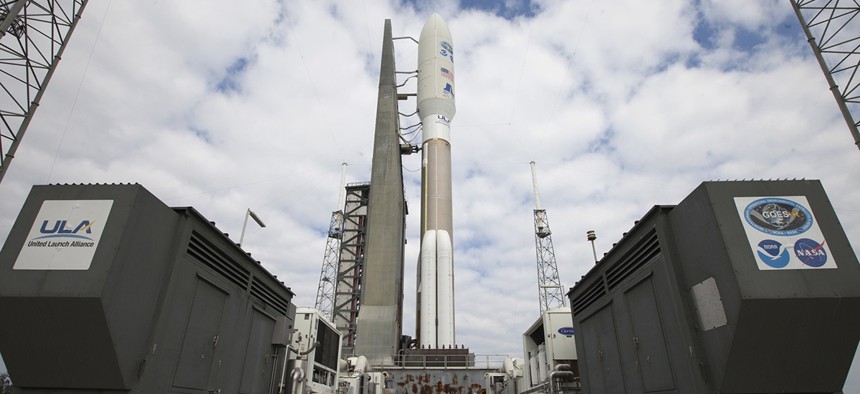Better Weather Forecasts Ahead: NOAA's Next-Gen Satellite Lifts Off

A ULA Atlas V rocket arrives at Space Launch Complex 41 at Cape Canaveral Air Force Station in Florida. The launch vehicle will send NOAA's Geostationary Operational Environmental Satellite (GOES-R) into orbit. NASA
When operational—validation of its six instruments could take a year—GOES-R will produce some 100 megabits of data per second, or 9 terabytes per day.
After a series of delays, the first of National Oceanic and Atmospheric Administration’s next-generation geostationary environmental satellites is now orbiting 22,300 miles above the Earth’s surface following a successful launch Friday from Cape Canaveral, Florida.
GOES-R, which stands for the Geostationary Operational Environmental Satellite, is the first of an $11 billion constellation NOAA procured to keep pace with today’s evolving technologies. When operational—validation of its six instruments could take a year—it will produce some 100 megabits of data per second, or 9 terabytes per day.
The massive increase in data production will generate more timely and accurate weather forecasts for NOAA, which houses the National Weather Service and is responsible for producing weather products that do everything from track hurricanes to produce five-day forecasts on various mobile apps.
» Get the best federal technology news and ideas delivered right to your inbox. Sign up here.
“GOES-R is one of the most sophisticated Earth-observing platforms ever devised,” said NOAA Administrator Dr. Kathryn Sullivan, in a statement. “GOES-R’s instruments will be capable of scanning the planet five times faster and with four times more resolution than any other satellite in our fleet. With these new instruments and powerful new capabilities, GOES-R will strengthen NOAA’s ability to issue life-saving forecasts and warnings and make the United States an even stronger, more resilient weather-ready nation.”
In the meantime, NOAA will continue to mitigate issues it has had with another large satellite constellation: the $10 billion Joint Polar Satellite System. The first of that constellation, which will orbit the Earth at the poles in a much lower orbit, was delayed up to another six months in the fall because of issues with onboard instrumentation and ground systems. Scheduled for a March 2017 launch, JPSS-1 is likely delayed until at least October, increasing the likelihood of a degradation in weather forecasts because aging satellites now collecting polar-orbiting data are past their life expectancy.
NEXT STORY: Why Silicon Valley May Warm to Trump






